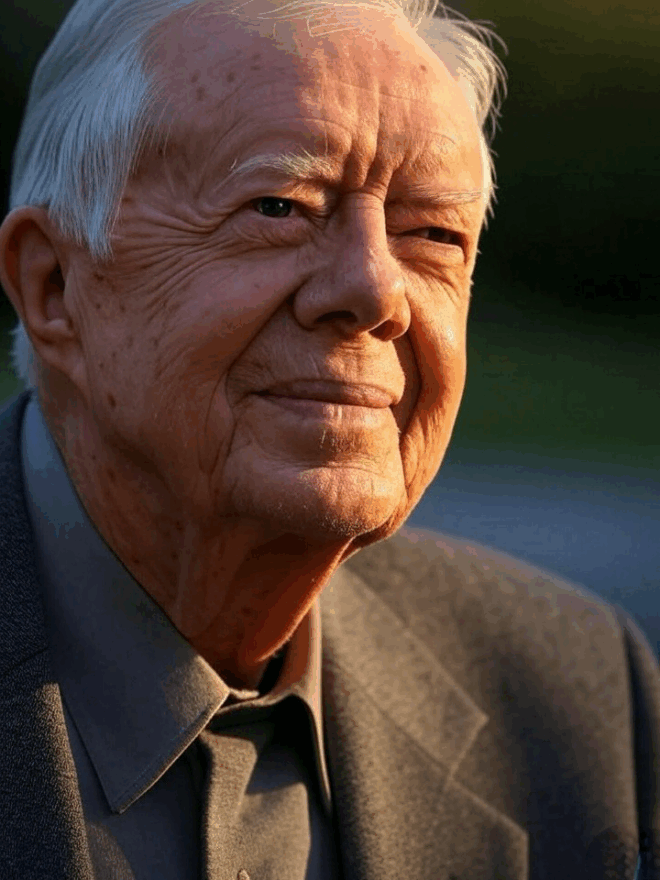
In January 1980, President Jimmy Carter delivered a defining moment in US foreign policy by proclaiming the Carter Doctrine before Congress. This doctrine asserted that the United States would utilise military force to prevent the Persian Gulf from falling into hostile hands. This declaration was a response to a series of geopolitical crises, including the Iranian Revolution, the Soviet invasion of Afghanistan and Britain’s withdrawal from its imperial commitments east of Suez. The Carter Doctrine marked a significant shift in US foreign policy, as it took on the responsibility of maintaining a precarious post-Ottoman order that had been established by European powers after World War I. However, the underlying motivation was not the promotion of democracy or human rights; rather, it was the protection of oil interests and the pursuit of stability in a region fraught with tensions.
Over the past four decades, US efforts to enforce stability in the Greater Middle East have often led to chaos, undermining the very order that Washington sought to protect. Interventions in Iraq, Libya and Afghanistan have created power vacuums that have fuelled sectarian strife and extremism. Iran, a key adversary since the 1979 revolution, has adeptly capitalised on this instability through a sophisticated network of proxies, including militias and political groups such as Hezbollah, Iraq’s Hashd al-Shaabi and Yemen’s Houthis. These proxies not only amplify Iran’s influence but also challenge US dominance, thriving in the disorder left in the wake of American policies. As we approach June 2025, the escalating US-Iran conflict starkly reflects the troubled legacy of the Carter Doctrine: a commitment to military dominance that has destabilised the Greater Middle East, coupled with Iran’s strategic use of proxies to exploit the resulting chaos.
The Carter Doctrine: Origins and Assumptions
The Carter Doctrine was born out of a tumultuous geopolitical landscape. The 1979 Iranian Revolution, which ousted the US-backed Shah, replaced a crucial ally with a theocratic regime under Ayatollah Khomeini, who viewed the United States as the “Great Satan.” Simultaneously, the Soviet Union’s invasion of Afghanistan heightened fears of Moscow’s expansion into the Persian Gulf, jeopardising vital oil routes. The withdrawal of British military presence east of Suez by 1971 had left a vacuum that neither local powers nor the US were fully prepared to fill. The Gulf’s oil fields, critical to global economic stability, became a focal point of US interests. Carter’s doctrine declared that any attempt to control the Gulf would be perceived as a direct threat to US interests, warranting military intervention if necessary.
The doctrine was predicated on the belief that military power could effectively deter adversaries and suppress volatility. The establishment of the Rapid Deployment Joint Task Force, which later evolved into US Central Command (CENTCOM), signified a shift from reliance on proxies to direct military engagement in the region. However, the doctrine was built on flawed assumptions. The post-Ottoman order, delineated by European powers with scant regard for ethnic, sectarian or tribal realities, was inherently unstable. By committing to preserve this order through military means, the US tethered itself to a disintegrating system, underestimating the complex political, cultural and religious dynamics at play.
Moreover, the Carter Doctrine prioritised short-term stability over long-term reform. Access to oil necessitated cooperative regimes rather than democratic ones, leading Washington to support authoritarian rulers, from Saudi monarchs to Saddam Hussein in the 1980s, while ignoring their domestic repression and regional ambitions. Such alliances often sowed seeds of resentment, which Iran would later exploit. The doctrine’s reliance on military force as a stabilising tool overlooked the risk that interventions could exacerbate tensions, creating cycles of violence and disorder.
The Paradox of US Intervention: From Stability to Chaos
Since the inception of the Carter Doctrine, US military interventions in the Greater Middle East have repeatedly yielded outcomes contrary to their stated objectives. The 1991 Gulf War, aimed at expelling Iraqi forces from Kuwait, showcased American military might but left Saddam Hussein in power, necessitating a decade of sanctions, no-fly zones and a persistent US presence. These measures weakened Iraq’s state, deepened sectarian divides and fuelled anti-American sentiment, laying the groundwork for future instability. The 2001 invasion of Afghanistan, intended to dismantle al-Qaeda and oust the Taliban, devolved into a 20-year occupation. Despite billions spent, the US failed to establish a stable government and the chaotic withdrawal in 2021 allowed the Taliban to reclaim power, leaving Afghanistan in disarray.
The 2003 invasion of Iraq stands as the most glaring example of this paradox. Intended to eliminate Saddam’s regime and transform Iraq into a democratic beacon, the invasion unleashed chaos. The US disbanded Iraq’s army and purged Ba’athist officials, creating a power vacuum that fuelled insurgency and sectarian violence. Al-Qaeda in Iraq emerged, later evolving into ISIS, which seized vast territories by 2014. The US-installed government, dominated by Shiite factions, alienated Sunnis and Kurds, enabling Iran to expand its influence through allied militias. Iraq remains fractured, with ongoing militia violence and weak governance.
The 2011 NATO-led intervention in Libya serves as another cautionary tale. Aimed at protecting civilians and toppling Muammar Gaddafi, the campaign succeeded in regime change but failed to plan for the aftermath. Libya descended into civil war, with militias and warlords vying for control. The absence of a central government allowed extremist groups to flourish, while weapons from Gaddafi’s arsenals spread across the region, fuelling conflicts in Mali and Syria. Libya’s chaos underscores the US tendency to prioritise short-term disruption—removing objectionable leaders—over long-term stability.
These interventions reflect a recurring pattern, reminiscent of the Vietnam-era adage of “burning down the village to save it.” US policymakers have often succumbed to the temptation to unleash near-term chaos, betting that order will eventually emerge. Regime change, frequently marketed as a precursor to nation-building, has been the primary method employed. Yet the US has proven far more adept at dismantling regimes than rebuilding states. Power vacuums, rather than stable governments, have been the result. In Iraq, Libya and Afghanistan, the absence of effective governance has fuelled insurgency, sectarianism and extremism, undermining the Carter Doctrine’s goal of stability.
Iran’s Proxy Strategy: Capitalising on US Failures
Iran has played a central role in this narrative, both as a catalyst for the Carter Doctrine and as a beneficiary of US missteps. Prior to 1979, Iran was a US ally, a cornerstone of Gulf stability under the Shah. The Iranian Revolution disrupted this dynamic, establishing a regime intent on exporting its ideology and challenging the US-backed order. While the Carter Doctrine aimed to contain Iran, American interventions have often inadvertently strengthened Tehran’s position.
Iran’s proxy network, orchestrated by the Islamic Revolutionary Guard Corps (IRGC) and its Quds Force, is a cornerstone of its foreign policy. These non-state actors—militias, political groups and insurgent factions—enable Iran to project power, deter adversaries and destabilise rivals without direct confrontation. This strategy compensates for Iran’s conventional military weaknesses and economic constraints under sanctions, leveraging shared Shiite identity, anti-Western sentiment and local grievances.
Key proxies include:
1. Hezbollah (Lebanon): Founded in 1982 with Iranian support, Hezbollah is Iran’s most formidable proxy, blending military and political power. Its arsenal, estimated at over 150,000 rockets and missiles, poses a threat to Israel, while its elite fighters have honed their skills in Syria. Hezbollah conducts cross-border attacks on Israel, supports Assad’s regime and trains other proxies, such as Yemen’s Houthis. In Lebanon, it dominates politics, wielding veto power over government decisions.
2. Hashd al-Shaabi (Popular Mobilisation Forces, Iraq): Formed in 2014 to combat ISIS, the PMF includes Iran-backed Shiite militias that have integrated into Iraq’s security forces but remain loyal to Tehran. They attack US bases and shape Iraqi politics to favour Iran, undermining Iraq’s sovereignty and escalating US-Iran tensions.
3. Houthi Movement (Ansar Allah, Yemen): The Houthis control northern Yemen and receive Iranian missiles and drones. They launch attacks on Saudi Arabia and disrupt Red Sea shipping, tying down Saudi resources and enhancing Iran’s leverage in Yemen’s war.
4. Syrian Militias: Iran supports various militias in Syria to bolster Assad and secure a land corridor to Lebanon. These forces fight rebels and counter Israeli airstrikes, entrenching Iran’s presence and complicating US objectives.
5. Other Proxies: Iran backs smaller groups, such as Palestinian Islamic Jihad, which launched rockets at Israel and Bahraini Shiite militias that conducted sabotage operations.
Iran’s proxies thrive in the power vacuums created by US interventions. The 2003 Iraq invasion, by removing Saddam and installing a Shiite-led government, allowed Iran to cultivate PMF militias, which now dominate Iraqi security. In Syria, US support for anti-Assad forces created space for Iran to entrench its presence. In Yemen, the Saudi-led war, backed by the US, has inadvertently strengthened the Houthis, who utilise Iranian-supplied drones to target Gulf states. These groups exploit chaos, aligning with Iran’s goal of dismantling the US-backed order.
The Current US-Iran Conflict: Proxies and Power Vacuums
As of June 2025, US-Iran tensions are a flashpoint in the Greater Middle East, with proxies amplifying the conflict. The collapse of the 2015 Joint Comprehensive Plan of Action (JCPOA) after the US withdrawal in 2018 has accelerated Iran’s nuclear program, with reports indicating that Iran is weeks away from nuclear breakout capacity. Diplomatic efforts to revive the deal have stalled, hampered by mutual distrust and domestic pressures. Iran’s proxies escalate regional instability: Houthi attacks disrupt global trade, Hezbollah threatens Israel with daily rocket barrages and PMF militias target US forces in Iraq. The US has responded with sanctions, cyberattacks and targeted strikes, such as the 2020 killing of Qassem Soleimani, prompted by proxy attacks.
This standoff encapsulates the legacy of the Carter Doctrine. US interventions, intended to secure stability, have weakened the post-Ottoman order, creating opportunities for Iran. The 2003 Iraq invasion empowered Iran’s allies, while Libya’s collapse and Syria’s fragmentation provided space for Tehran’s proxies to operate. Iran’s strategy—leveraging proxies, asymmetric warfare and nuclear ambiguity—exploits this disorder, positioning Tehran as both a beneficiary and driver of instability. Radical Islamist groups, while often at odds with Iran, share its goal of dismantling the US-backed system, complicating efforts to isolate Tehran.
The temptation to use force against Iran persists. Advocates for strikes on its nuclear facilities or proxies argue that such actions could restore deterrence. However, history suggests caution. Military action risks repeating the cycle of disruption followed by chaos. A strike on Iran could ignite a regional conflict, with proxies retaliating through cyberattacks, missile strikes or maritime disruptions. Such actions could undermine the economic interests that the Carter Doctrine sought to protect.
Challenges and Limitations of Iran’s Proxy Strategy
While Iran’s proxy model has proven effective, it faces significant constraints:
• Local Autonomy: Proxies often prioritise local goals over Iranian directives, as seen with the Houthis’ refusal to join a regional ceasefire in 2024.
• Sectarian Backlash: Iran’s Shiite-centric approach alienates Sunni populations, reviving extremist groups like al-Qaeda in Iraq.
• Economic Strain: Sanctions limit Iran’s funding, forcing reliance on oil smuggling and illicit networks.
• Regional Counterpressure: Israeli airstrikes on Hezbollah and Saudi operations against the Houthis weaken Iran’s network.
For the US, countering these proxies presents challenges. Strikes on groups like Kata’ib Hezbollah may deter attacks but risk civilian backlash. Sanctions on the IRGC disrupt funding but are often evaded. Diplomatic efforts to support local governments falter amid Tehran’s entrenched influence.
Policy Options: Moving Beyond the Carter Doctrine
The US-Iran conflict underscores the necessity of reassessing the assumptions underpinning the Carter Doctrine. For over four decades, America has pursued stability through military dominance, only to exacerbate volatility. Iran’s proxies have thrived in this chaos, exploiting failed states and sectarian divides. To break this cycle, the US could adopt a multifaceted approach:
1. Diplomacy and De-escalation: Reviving the JCPOA could slow Iran’s nuclear program and reduce tensions. Regional security talks could address proxy conflicts and promote stability.
2. Targeted Counterterrorism: Intelligence-driven operations to disrupt IRGC supply lines can weaken proxies without large-scale conflict, provided they avoid civilian casualties.
3. Strengthening Regional Alliances: Coordinating with allies like Israel and Saudi Arabia can enhance efforts to counter proxies through shared intelligence and operations.
4. Local Empowerment: Supporting governance and economic reforms in Iraq and Lebanon can reduce proxy influence and address the root causes of instability.
5. Reducing Military Footprint: A lighter US presence focused on counterterrorism and diplomacy could minimise unintended consequences while preserving interests.
6. Countering Ideological Appeal: US public diplomacy can counter Iran’s narrative by promoting economic opportunity and local governance.
Conclusion
The Carter Doctrine, established in 1980, committed the US to preserving a faltering post-Ottoman order through military power. Its legacy is paradoxical: interventions intended to secure stability have fuelled chaos, empowering Iran and its proxies to challenge American dominance. As of June 2025, this standoff threatens regional and global stability, with Iran’s nuclear ambitions and proxy attacks raising the stakes. The US must confront the limits of force and the unintended consequences of its policies. Stability in the Greater Middle East requires a shift from military might to diplomacy, targeted operations and local engagement. Only by moving beyond the flawed assumptions of the Carter Doctrine can the US effectively counter Iran’s proxies and foster a more stable region.


